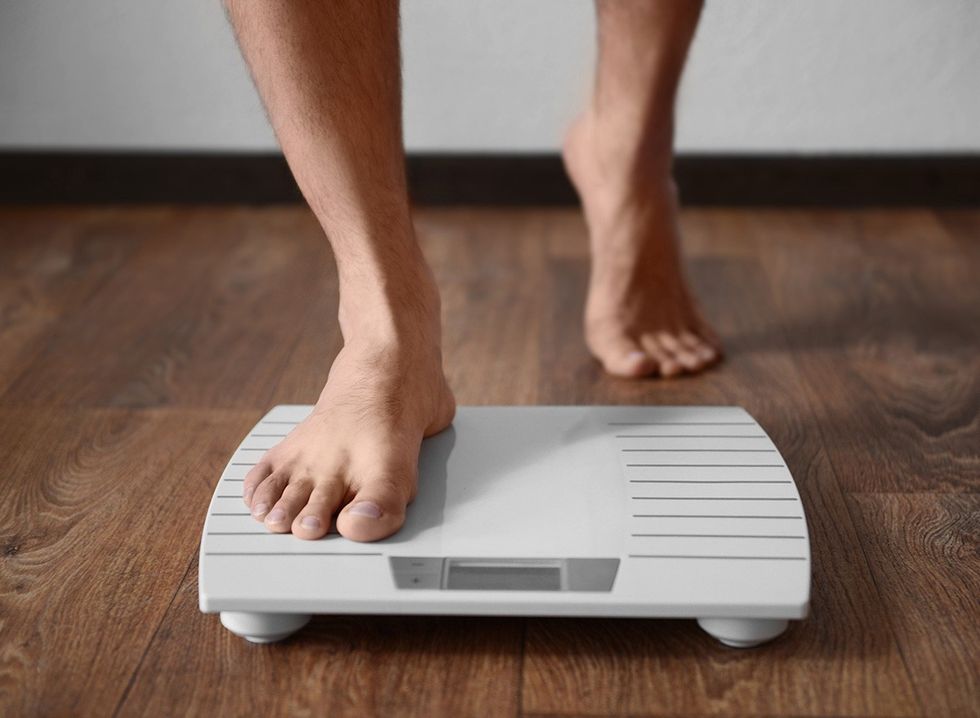There are many commonly held beliefs about fitness and getting into shape that are not based in fact and can be misleading when you start your fitness journey. That’s why we asked personal trainer and fitness coach Arabella Featherstone to give us the truth behind these myths. Read on to see why spot reduction is not possible, why crunches aren't the best way to achieve a six pack, and why sweat doesn't equal fat loss.
Myth: Spot reduction is possible

Unfortunately, you can't specifically target fat loss from a particular area of your body. Fat loss occurs throughout the body as a whole, and targeted exercises only strengthen the underlying muscles.
Myth: Cardio is the only way to lose weight

While cardio exercises are effective for calorie burning, strength training plays a crucial role too. Strength training builds lean muscle mass, which increases your metabolic rate, helping you burn more calories even at rest.
Myth: Lifting weights makes women bulky

This is a common misconception. Women generally don't have enough testosterone to develop large, bulky muscles. Strength training instead helps build lean muscle, improves bone density, and enhances overall body composition. Eating in a calorie surplus whilst doing intense strength training to a specific program can cause women to bulk but it’s not easy to do!
Myth: Crunches are the best way to achieve a six-pack

While crunches can strengthen your abdominal muscles, they alone won't give you a visible six-pack. Achieving defined abs requires a combination of core exercises, a balanced diet, and overall fat loss through a well-rounded routine.
Myth: You need to exercise for hours to see results

Definitely not true – think quality over quantity! Focus on proper form, and consistency rather than the duration of your workouts. Following a progressive program consistently over time will get you results - you don’t have to work out for hours!
RELATED: 5 Foods to Melt Your Belly Fat Away
Myth: Sweat equals fat loss

Sweating is simply your body's way of regulating temperature and cooling down. While sweating can lead to temporary weight loss due to water loss, it doesn't directly translate to fat loss. Sustainable weight loss requires a combination of exercise, proper nutrition, and a balanced lifestyle.
Myth: You should always feel sore after a workout

Muscle soreness (delayed onset muscle soreness or DOMS) can occur after a challenging workout, but it's not a reliable indicator of the effectiveness of your routine. Progress and results come from consistent, progressive training, not just soreness.
Myth: Strength training is just for people who want big muscles

Definitely not true – strength training offers so many benefits that can significantly impact both the quality and quantity of life. Strength training helps maintain and increase muscle mass, which is crucial for performing everyday activities like walking and carrying the food shopping. Strength training is great for your bone health and increases bone density which reduces the risk of osteoporosis and fractures. Strength training also improves mental health. It helps reduce stress by promoting the release of endorphins and improve cognitive function. Ultimately, strength training has a knock-on effect, building strength in the gym helps build (mental) strength outside of the gym. This can massively improve quality of life as it helps boost your self-esteem and confidence.
Myth: You don’t need to warm up before working out

Wrong! A pre workout warm up is important preparation for both the physical and mental challenges of exercise. It’s a proactive step towards injury prevention, improved performance and a positive mindset. It ensures that your body and mind are in sync and ready to tackle the demands of your workout. Do not start to work out without it!
RELATED: Emily Skye Flaunts Abs During Glute-Busting Workout
Myth: Only athletes can build muscular power

Anyone can build muscular power without being an athlete and there’s no age limit for building strength and power. You can safely start building muscular power with body weight exercises like squat jumps and burpees. Some other examples of muscular power building exercises are medicine ball throws - start light and progress to heavier ones. Kettlebells are great pieces of equipment for muscular power building. I’d recommend doing exercises like kettlebell swings - focusing on the hip hinge movement to generate power.
Always make sure form is first when performing any exercises. Don’t do anything you can’t do and start off with low impact variations or balancing exercises if you’re a complete beginner or have any movement impairments. Progress gradually, increasing intensity by either adding to the weight or height of jumps. Always make sure you include strength training as it’s the foundation of power and will help avoid injuries.
💪🔥Body Booster: Listen to your body and reach out for help if you’re not sure, fitness is meant to be fun and should be enjoyed safely.
Arabella Featherstone is a leading fitness trainer and coach from Feathers Food & Fitness with the vision and drive to help people and transform her clients’ bodies and minds through fitness and nutrition. Her free e-book Unleashing the Strength Within is now available on her website.














 Shutterstock
Shutterstock Shutterstock
Shutterstock Shutterstock
Shutterstock Shutterstock
Shutterstock Shutterstock
Shutterstock Shutterstock
Shutterstock Shutterstock
Shutterstock Shutterstock
Shutterstock Shutterstock
Shutterstock Kat Best
Kat Best

 Shutterstock
Shutterstock Shutterstock
Shutterstock Shutterstock
Shutterstock Shutterstock
Shutterstock Shutterstock
Shutterstock Shutterstock
Shutterstock Shutterstock
Shutterstock Shutterstock
Shutterstock Shutterstock
Shutterstock

 Shutterstock
Shutterstock Shutterstock
Shutterstock Shutterstock
Shutterstock Shutterstock
Shutterstock Shutterstock
Shutterstock Shutterstock
Shutterstock Shutterstock
Shutterstock Shutterstock
Shutterstock Shutterstock
Shutterstock


 Shutterstock
Shutterstock Shutterstock
Shutterstock
 Shutterstock
Shutterstock Shutterstock
Shutterstock Shutterstock
Shutterstock Shutterstock
Shutterstock Shutterstock
Shutterstock Shutterstock
Shutterstock Shutterstock
Shutterstock